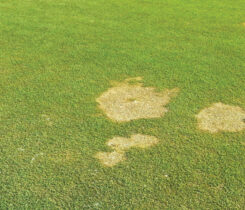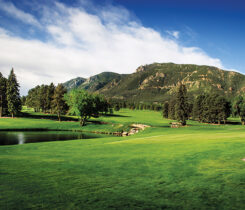The importance of soil moisture meter accuracy in saline soils
Measuring soil moisture with time domain reflectometry (TDR) sensors can aid turfgrass water conservation efforts. Improved irrigation efficiency improves playing conditions and assists in rootzone salinity management.
In 2015, there was concern about the accuracy and reliability of hand-held TDR sensors in saline soils. New Mexico State University conducted a laboratory study to investigate the accuracy and reliability of TDR soil moisture sensors at different salinity levels.
Research methods
The team filled columns measuring 5.5 inches high and 8 inches in diameter with sand meeting USGA specifications for particle size distribution. The research team saturated the columns for 24 hours with distilled, tap or saline water.
The results were columns at an ECe of 0.46 (distilled water), 1.08 (tap water), and 3.68, 5.40, 5.78, 7.68, 9.38 and 19.84 dS m-1, respectively.
The researchers evaluated two FieldScout TDR 100 (Spectrum Technologies) with a rod length of 3 inches and two Decagon 5TE (Decagon Devices) with a rod length of 2 inches. The research team inserted the soil moisture sensors into the columns and placed them onto a pressure plate inside a pressure chamber to record sensor readings at different soil moisture levels.
Increasing air pressure removed water from the soil in the columns and sensors and initiated soil drying. At the end of the dry-down period, researchers dried columns at 221 degrees F. The team determined volumetric soil moisture for each moisture level and based data comparisons on either fitting linear regressions or quadratic polynomials to all salinities.
Results
Overall, sensor values increased with more soil moisture as slopes differ significantly from 0 for every soil salinity. Slopes for ECe ≥ 5 dS m-1 were greater than for salinities of ECe < 4 dS m-1. The slope at ECe = 19.8 dS m-1 was 4 times higher than the slope at ECe = 0.5 dS m-1.
The results show that different salinity levels need separate calibration for ECe > 5 dS m-1 if the absolute soil moisture value is of interest rather than the relative difference. Soil sensors accurately estimated moisture in a USGA sand at salinity levels of ECe < 5 dS m-1.
This research led to the improvement of TDR soil moisture sensors to also measure salinity to improve accuracy.

Photo: Mike Kenna, Ph. D.
Mike Kenna, Ph.D., is the retired director of research, USGA Green Section. Contact him at mpkenna@gmail.com.










